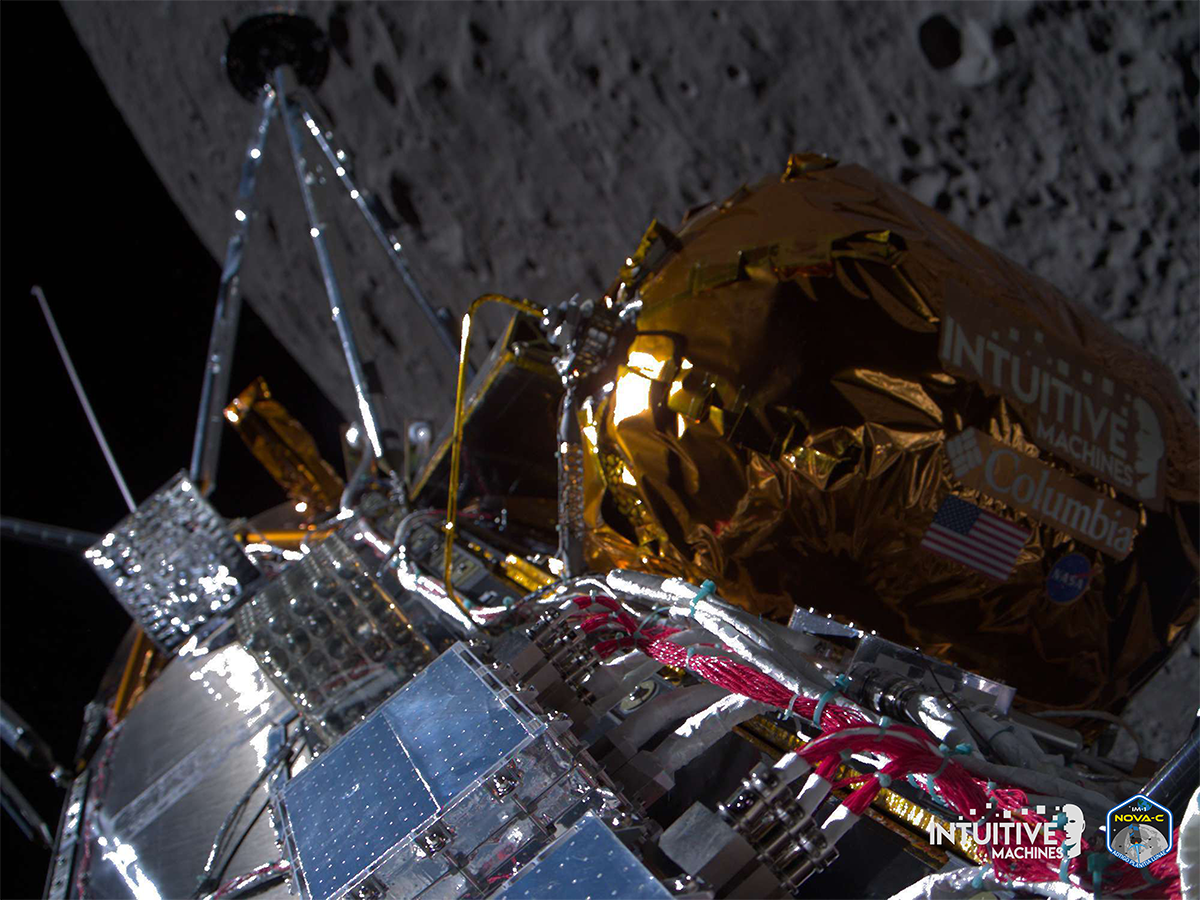Stay Up to Date
Submit your email address to receive the latest industry and Aerospace America news.
The Space Systems Technical Committee fosters the development, application and operation of space systems, and addresses emerging issues in the area.
There was progress this year toward advancing different classes of proliferated satellite constellations and taking ownership of orbital debris mitigation. In renewed pursuit of the moon and beyond, uncrewed landers achieved unprecedented feats, though challenges still persist in human-rated spacecraft.
Closest to home, the realm of very low-Earth orbit (250-350 kilometers) gained attention for its promise to boost data resolution and low-latency communication. At lower altitudes, atmospheric drag and high atomic oxygen concentrations pose spacecraft design challenges and necessitate aerodynamic and material considerations. In June, DARPA and the European Space Agency selected Redwire of Florida to develop and demonstrate a modular VLEO spacecraft with novel air-breathing capabilities by 2027.
In LEO, advancements included the January launch of SpaceX’s first Direct-to-Cell Starlink satellites. The antenna and software onboard enabled an unprecedented connection from space to a mobile phone on Earth. August marked the first-ever Link 16 military network entry to a U.S. Navy ship from space, via one of the Space Development Agency’s Tranche-0 satellites. This Proliferated Warfighter Space Architecture milestone could help lead to beyond-line-of-sight communications worldwide in near real time.
The trend of disaggregating traditional multiton satellites also extended to geostationary orbit. The Space Force announced in March that its Protected Tactical SATCOM-Global program will spend $248 million in fiscal year 2025 toward analyzing small maneuverable GEO satellites to boost resilience and communication capabilities.
Coupled with a burgeoning satellite population, derelict and abandoned spacecraft pose a growing risk of orbital collisions, as demonstrated in August by the breakup of Chinese Long March 6A upper stage that generated some 300 pieces of trackable debris. Crucial to mitigating such events is the development of autonomous spacecraft to characterize and deorbit large debris. Launched in February, Astroscale’s ADRAS-J spacecraft became the first to approach and image a piece of debris — in this case, an abandoned Japanese upper stage — via visible and infrared cameras and laser ranging sensors. In August, JAXA, the Japan Aerospace Exploration Agency, awarded Astroscale an $81 million contract to capture and deorbit the stage by 2029. The Indian Space Research Organisation also demonstrated its commitment to mitigating debris by deorbiting Cartosat-2 in February and facilitating early reentry of XPoSat’s terminal stage in March. Other innovative solutions that have been launched include Airbus’ Detumbler based on electromagnetic brakes and Japan-based LignoSat’s wooden frame that would minimize atmospheric pollution during burn-up.
NASA’s effort to return to the moon marked a milestone in February when Intuitive Machines’ Nova-C Odysseus landed in the lunar south pole, though the lander fell sideways shortly after. NASA continued to analyze the unexpected Orion heat shield erosion from the 2022 Artemis I test and make preparations for the Artemis II crewed lunar flyby, scheduled for 2025. In a first for humanity, China’s Chang’e-6 capsule in June returned samples from the far side of the moon.
In human spaceflight, a Boeing Starliner capsule carried two astronauts to the International Space Station in June for the long-awaited Crew Flight Test. With lingering concerns about Starliner’s helium leaks and thruster degradation, NASA decided to return the unoccupied capsule in September and return the astronauts in February 2025 aboard a SpaceX Crew Dragon. In September, the first private spacewalk was conducted during the five-day Polaris Dawn mission, following delays due to SpaceX grounding its Falcon rockets for the second time this year.
Fascinating scientific discoveries continued to further the search for potential life outside Earth. Most notably, the latest analysis of seismic data from NASA’s Mars InSight lander indicates there is a large reservoir of liquid water 10-20 km below the surface. Other findings included the detection of molecular water on asteroid surfaces by isolating mid-infrared spectral signatures, and the atmospheric detection of water vapor in the exoplanet GJ 9827d, as observed by the Hubble Space Telescope.
Contributors: John Bloomer and John Carsten
Stay Up to Date
Submit your email address to receive the latest industry and Aerospace America news.




